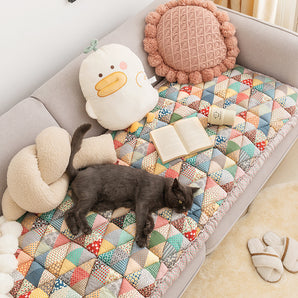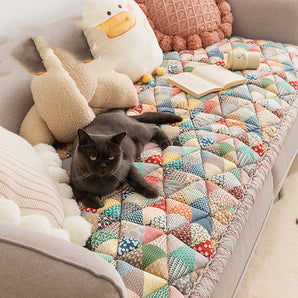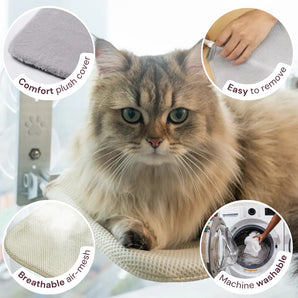Cats may have a reputation for being elusive and independent, but with the right strategies, you can build a bond with them. In this post, we reveal 10 science-backed tips to help you connect with even the most reserved cats. Whether you're a new cat owner or just looking to improve your relationship with your furry friend, these tips will guide you.
1. Give Cats the Freedom to Approach You
Cats prefer to initiate contact. Rather than chasing after them, sit quietly and let them come to you. Studies show that cats are more likely to approach when they aren't being overwhelmed with attention. Allow your cat to make the first move to foster trust and connection.
2. Focus on Preferred Petting Spots
Knowing where to pet a cat is essential. Cats love being stroked in certain areas, like between their eyes and ears, which can lead to purring and kneading. Avoid petting near their tail, as this is a sensitive spot that can lead to overstimulation.
3. Mind Your Scent
Cats rely heavily on their sense of smell. Unfamiliar scents like strong perfumes or the presence of another animal may make a cat wary. To make a cat feel comfortable, use unscented products and avoid strong fragrances when trying to bond with your cat.
4. Approach Them in a Cat-Like Manner
Cats communicate through body language. When greeting another cat, they often touch noses. You can imitate this by extending a finger at nose level, allowing the cat to sniff. This signals friendliness and can help the cat feel more at ease.
5. Use Feline-Friendly Scents
Cats can get anxious around unfamiliar smells. Using pheromone sprays mimics the chemical messages that cats naturally release to soothe themselves. These sprays can help calm nervous cats, making them more likely to trust you.
6. Offer Treats Strategically
While cats generally prefer social interaction, treats can be used as a positive reinforcement tool. After a positive interaction, offer a high-quality treat to encourage trust. Be careful not to overfeed, as moderation is key to keeping your cat healthy.
7. Slow Blink to Show Friendliness
Direct eye contact can be seen as a threat by cats. Instead, try slow blinking—a behavior that cats use to signal trust and comfort. Slow blinks show your cat that you mean no harm, which can help to calm anxious or wary cats.
8. Respect Boundaries
Pay attention to the signs that a cat is feeling uncomfortable, such as flattened ears or a twitching tail. When a cat shows these signals, give them space. By respecting their boundaries, you'll encourage more positive interactions in the future.
9. Engage in Play
Interactive play is essential for bonding with your cat. Use toys that simulate prey, such as feather wands or string toys, to engage their hunting instincts. Playing with your cat not only builds a connection but also provides mental and physical stimulation.
10. Let the Cat Lead the Relationship
Patience is key when forming a bond with a cat. Rushing the process can backfire, so give the cat space and let them come to you on their terms. Over time, you'll build a stronger, more trusting relationship.








